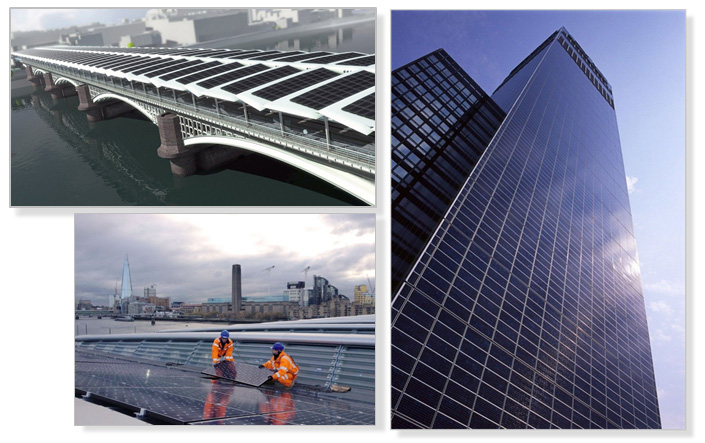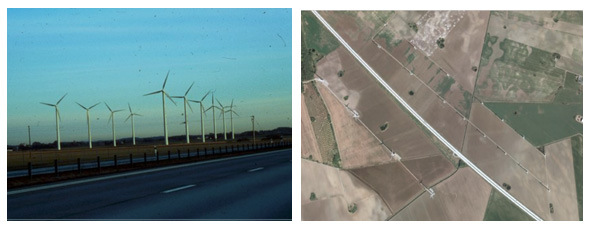Does renewable energy require a lot of land?
It depends on how clever you are!
in Japanese
Solar power can be generated by PV panels mounted on the ground. In Japan or Germany the electricity produced will then be in the order of 0.1 MWh per year and m2. To produce the almost 1000 TWh/year of electricity Japan use you would need 2-3 % of all land in Japan.
Producing the annual 300 TWh of electricity that nuclear power has done found be achieved at an area currently used for playing golf in Japan, if attempted with only ground mounted PV.
But solar panels can also be used on roofs of buildings. They can be used to shade car parking areas, cover east-, south- and west-facing walls of buildings, be used as noise-blocking walls along railway lines and roads, as shading roofs over rail-roads and motorways and other applications where they do not remove any land from other uses.

Copyright © Solarcentury
Looking at how they are used in reality, you find them on building structures, where they serve a second purpose, or on land where land is very cheap because it has no other uses. That is simply more profitable than paying for productive land.
Solar power will not be limited by lack of land in any country.
With bioenergy, the unexperienced believe bioenergy is the result of a crop planted for energy purposes. They calculate the amount of biomass produced per km2, assume 1/3 of the energy in biomass can be converted to electricity and find that enormous areas are required to substitute fossil or nuclear fuels.
But this is rarely how economically competitive bioenergy systems are designed. The lowest cost biomass is waste or residues from agriculture, the food industry, forestry or forest industries.
In Sweden people use as much bioenergy per capita as the Chinese use coal. Still, virtually no dedicated energy plantations exist. Instead, sawmills sell bark and saw dust for energy purposes and earn money on what was previously waste that they paid to get rid of. When cutting trees in the forests branches and the thin tops of trees are collected and made into wood-chips, sold to power plants. In food industries residues are often converted to biogas sold as an automotive fuel.
Actually, when a tree is cut to be used for timber and making pulp and paper only half of the biomass end up into the main product. The other half becomes available for energy purposes in the forest, or at the forest industry. The products themselves may be burned producing heat and electricity when they have served their purpose, and are considered waste.
Such systems help making the food- or forest industries more competitive, deliver a lot of energy and use no extra land at all.
Wind power plants must stand some hundred meters apart in order to produce efficiently. If you assume that the outer bound of a set of a group of plants is the land required and calculate how much electricity is produced per km2, you may find that you need a lot of land.
But in the real world economically efficient wind project uses land that is not losing value because of wind-power plants. Farmland along a motorway may host dozens of wind power plants. Food can be produced all around the towers of the power plants. All land restricted by the noise from the motorway is not affected by the noise of the wind power plant.

The farmer gain extra income making his farmland more profitable. So, wind power plants support farmers and farming. It is not competing with it.
Those who argue against renewable energy, saying installations must be made in an economically inefficient way using lots of land, only prove their own inability. Many of us know how to make renewable energy both possible and economically profitable requiring little or no extra land.

